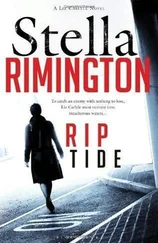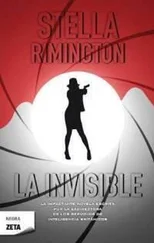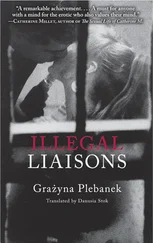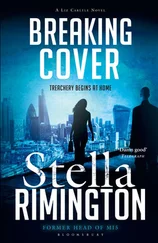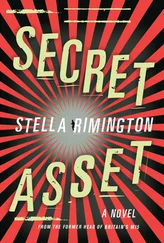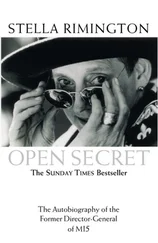He thought again of Simmons. I’ve got him where I want him, thought Michael. He’s not even going to try and lie to me.
As he left the building Jerry Simmons was seething. It was bad enough to have been found out—bloody Vladimir and his insistence on Hampstead Heath, he thought furiously. He might as well have chosen Piccadilly Circus.
Even worse was being played like a fish by this fresh-faced twerp. If his name’s Magnusson, thought Jerry bitterly, mine’s Marco Polo. He’d do what he had to do—“Magnusson” wasn’t exactly leaving him a choice, no more than Rykov had. No, he wasn’t going to tell the kid any lies. Yet as Jerry remembered the gun he’d seen in Brunovsky’s safe, he didn’t see any reason why he should tell the whole truth, either.
“Your turn,” said the old lady, Sonia Warschawsky, encouragingly.
Liz took a step forward and peered at the painting. Once she would have said it was a picture of a horse and left it at that, but she knew better now. “Let’s see. It’s a modern painting but the expert handling of paint gives it a sensuousness that is very old-fashioned. It’s full of references to earlier painters—the chiaroscuro light and shadow of the field is straight out of Vermeer.” She stood back contemplatively. “And the anatomical precision of the horse is pure Stubbs.”
“Excellent,” said Sonia. “Give me another week and I’ll make an art critic of you.” She gave a high clear laugh that belied her years and elegant appearance. Sonia was tall and slim, remarkably upright for a woman in her eighties, with silver hair held back by an ivory cameo slide, startling blue eyes, a nose as sharp as a cutter’s prow and that great asset called “bone structure”—in her case, high cheeks and a small but sturdy chin. She wore a green tweed suit that had certainly been purchased before Liz was born, but, having come originally from a Paris salon, found itself, forty years on, in fashion once more.
Born in the twenties into a wealthy French-Russian family, Sonia Warschawsky had in her young days moved easily through Europe, visiting members of her extended family in great houses and charming holiday villas, meeting artists and musicians, speaking fluent English, French and Russian, a child of aristocratic interwar Europe. She had been staying with her grandmother in the South of France when the Second World War was declared and suddenly privilege ended. In the panic of June 1940, she escaped to England with some of her young relatives on a Dutch merchant ship, probably the last ship to leave France for England. After the war, her formidable intelligence, her cultured background and her family influence had got her to Girton College, Cambridge, and in Cambridge she had remained, eventually becoming a don at Newnham, where even now she occasionally taught, still full of opinions, energetically and often tartly expressed.
“That’s enough for now,” Sonia declared. “Let’s have some tea.”
They left the gallery of the Fitzwilliam and went to the museum’s café in a covered courtyard. This was Liz’s first sortie out with Sonia since she had arrived in Cambridge three days before. She felt like a learner driver on an inaugural run with her instructor.
On the previous Thursday, a courier had rung the bell to her flat in Kentish Town, and while Liz was still blinking the sleep from her eyes he had handed over a large Jiffy bag. Inside she’d found three illustrated histories of art, and she had spent the weekend going slowly through their pages. On Monday, when she’d taken a taxi from the station and dropped her bags off at the Royal Cambridge Hotel, Liz not only knew when Gainsborough had been born, she could name half a dozen subjects of his portraits.
Sonia lived alone, ten minutes’ walk from the city’s central cluster of colleges, in a small Victorian house of yellow brick. It had a large bay window and a white wooden trellis by the front door, on which an iceberg rose was already beginning its springtime climb.
She made it clear from the start that she knew Liz’s line of work, though she accepted at face value that Liz was called Jane Falconer. “The brief I’ve had,” she said on the first morning, as they sat down in her sitting room by the bay window, “is to give you a crash course in art history, with some special tuition on modern Russian painters, especially Pashko. Is that correct, Jane?”
Liz nodded. “Yes.”
“And as I understand it,” Sonia said with a sly smile, “it’s not so much what you know that will be important, but what you seem to know.”
Liz smiled. “ A Bluffer’s Guide. ” They both laughed and the ice was broken.
They soon established their working routine. Sonia sat in one corner in a rocking chair, while Liz took over an old Knole sofa, surrounded by her books and notes. On the walls there were dozens of drawings and pictures, most landscapes of English scenes, but with the occasional Russian subject—a small portrait of Tsar Nicholas, an aquatint of the Hermitage. Similarly, the many bibelots that dotted the side tables and mantelpiece were mostly English, but there was a black lacquer box, with a hand-painted scene in gold, which especially attracted Liz, and several miniature icons.
They worked chronologically, trying to cover a century a day. Sonia talked while Liz took voluminous notes. She was a spontaneous, gifted teacher, given to aphorisms that Liz could use:
“The Norwich School is Constable moved to Norfolk, and suffering in the journey” “The thing to remember about Pissarro is that he is simply Cézanne without the genius” “Turner is the first Impressionist. He prefigures Monet in two key respects: light—and more light!”
Every two hours or so, they took a break, retreating to the small kitchen at the back of the house, where Sonia would make tea, and they’d sit for a quarter of an hour at the small pine table and talk about anything but art history.
Sonia spoke freely and fascinatingly about Europe between the wars but about her life after she reached England in 1940 she was more reticent. She said she had spent the war near London, and gave just a hint that there might have been an intelligence connection—she mentioned Bletchley once as if she’d known the place. And that was all. Liz knew Sonia had married—Warschawsky was her married name—but she did not know what had happened to her husband and didn’t want to press, especially as Sonia seemed to sense that Liz herself did not welcome many personal questions.
It was the Easter vacation, so the Fitzwilliam café was crowded with parents and children. Finding a corner table at last, Liz went to get tea and scones. “I’ve been admiring your ring,” she said when she returned with a tray, pointing to the large oval emerald, set in silver on gold, and surrounded by old, dark petal-shaped diamonds.
“When my mother fled Russia in 1921, she left with the clothes on her back and this ring. She was so poor that she was going to have to sell it to pay her rent, but fortunately she met my father first.” She gave a light laugh. “He was French—I spoke Russian and French before I knew English.
“But enough about the past,” she said briskly, putting her cup down. “I was wondering, would you like to have supper at my house tomorrow night? I have some friends coming—they’re Russian. Well, Anglo-Russian. Like me.”
“I’d love to,” said Liz.
Sonia nodded. “Good. Now perhaps we can have a look at the Monets. Don’t look so worried—there are only four of them.”
At her hotel on Trumpington Street, Liz went to reception to ask for her room key. Behind the counter the manager, a diminutive man with a red bow tie, smiled at her. “Did your friend find you?”
Читать дальше





